JATROPHA
Jatropha
L., Sp. Pl. 1006. 1753; Gen. Pl. ed. 5: 437. 1754; Muell. Arg. in DC., Prodr. 15(2). 1076. 1866; Benth. & Hook. f., Gen. Pl. 3(1): 311. 1880; Hook. f., Fl. Brit. Ind. 5: 382. 1890; Li. & Gilbert, Fl. China @eFloras.org 11: 268; Dehgan, Fl. North Amer. @ eFloras.org vol. 12; Radcliffe -Smith, Fl. Pak. @ eFloras.org p. 77.
Herbs, subshrubs, shrubs or trees, monoecious or dioecious; indumentum simple, sometimes glandular. Leaves deciduous or persistent, alternate, sometimes appearing fascicled, simple, sessile or petiolate, blade unlobed or palmately-lobed, margin entire, serrate or dentate, venation palmate or pinnate. Inflorescence unisexual or bisexual (pistillate flowers central, staminate lateral), axillary or terminal, cymes or fascicles or flowers solitary. Pedicels present. Male Flowers: Sepals 5, distinct or connate to 1/2 or more length. Petals 5, free or connate basally to most of length, variously coloured. Nectary extrastaminal, annular and lobed, or of 5 glands. Stamens 6,8 or 10 in 1-2 whorls, free or connate basally to most length. Pistillode 0. Female Flowers: Sepals, petals and nectaries +/- similar as in male flowers. Staminodes sometimes present. Pistil 1-3-carpellate, styles (1-)3, free or connate basally to most length, 2-fid, ovary (1-)2-3(-5)-locular, with one ovule per cell. Fruit schizocarpic, subdrupaceous or capsular. Seeds carunculate, the caruncle often much divided, testa crustaceous.
174 species
Jatropha curcas
Jatropha curcas
L., Sp. Pl. 2: 1006. 1753; Muell. Arg. in DC., Prodr. 15(2). 1080. 1866; Hook. f., Fl. Brit. Ind. 5: 383. 1890; Pax in Engl. Pflanzenreich 4. 147. t. 30. 1910; Parker, For. Fl. Punj. ed. 1: 460. 1918 (Reprint 1970); Radcliffe -Smith, Fl. Pak. @ eFloras.org p. 80; Fl. China @ eFloras.org 11: 268; Fl. North Amer. @ eFloras.org vol.12; Curcas indica A. Rich., Hist. Fid. Cuba, Bot. 11: 208. 1850; Manihot curcas (L.) Crantz, Inst. Rei. Herb. 1: 167. 1766.
A large deciduous soft-wooded shrub or small tree, up to 6 m. Bark smooth, shiny, peeling. Stems somewhat fleshy, copiously emitting milky juice when cut. Leaves alternate; petioles 8-20 cm long; leaf blades 10-15 cm x 7-12 cm, broadly ovate, base cordate, 7-9-nerved, usually palmately 3- or 5-lobed, glabrous, median lobe often acutely acuminate, the laterals acute or obtuse, entire or obscurely denticulate. Stipules minute, very fugacious, sometimes absent. Inflorescence usually lateral, often paired, cymose panicle, subcorymbiform, up to 12 cm long, with unbranched peduncle up to 7 cm long; bracts linear-lanceolate, 5-10 mm long, acute, entire. Flowers lax, 7-8 mm across, yellowish-green; peduncles and pedicels more or less tomentose; pedicels articulate. Male Flowers: Calyx deeply 5-cleft, calyx lobes elliptic- ovate, 5-6 mm x 2-2.5 mm, obtuse, entire, imbricate. Corolla campanulate 5, oblong-ovate, ca. 7 mm x 3 mm, rounded or retuse at apex, recurved nearly in middle, greenish-yellow, pilose inside. Disc glands 5, large, free, erect, rounded, yellow. Stamens 8 or 10, biseriate, outer whorl of 5 free stamens with filaments ca. 3.5 mm long; inner whorl of 3 or 5 stamens, filaments connate half way up in a central column; all anthers oblong, apiculate, erect, ca. 1.5 mm long, pilose on upper side. Female Flowers: Calyx and corolla +/- similar as in male flowers; disc glands 5, compressed, truncate or retuse. Staminodes 10, whitish with orange tips. Ovary subtrilobate-ellipsoid, ca. 2 mm x 2 mm, 3- locular, 1 ovule per cell, pendulous; styles 3, connate at base, stigmas elongate, lanceolate, erect, bifid. Fruit ellipsoid, 2.5-3 cm x 2-2.5 cm, black, breaking up loculicidally into 3 two- valved cocci. Seeds compressed, ovoid-oblong, dull brown-black, ca. 1.7 cm x 1.3 cm, caruncle minute.
Common Names: Physic-nut, Purging-nut
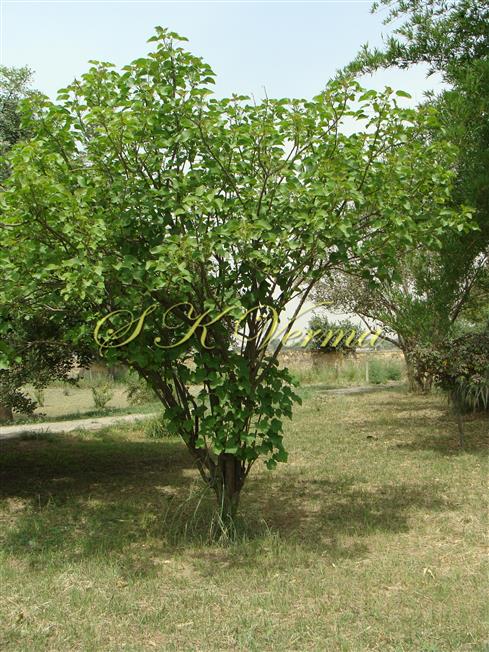
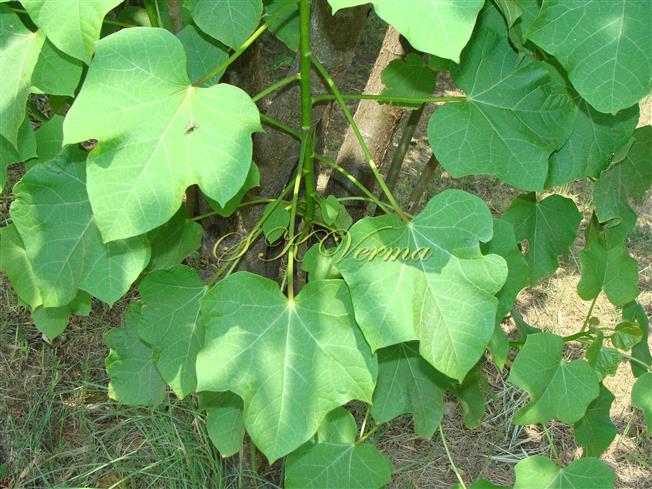
-6169.jpg)
-DSC07638.jpg)
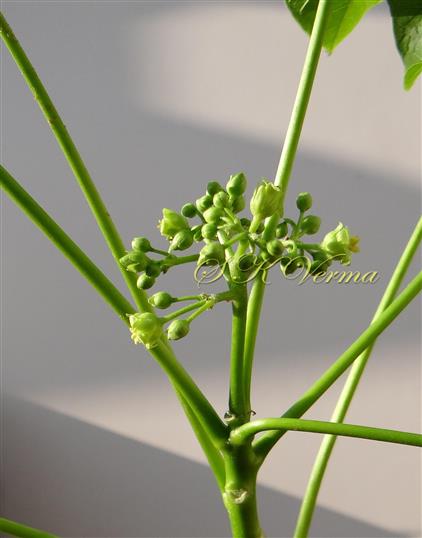
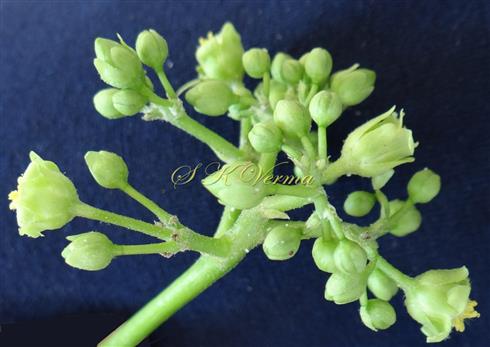
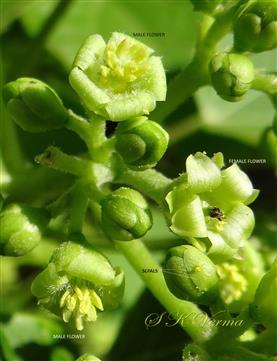
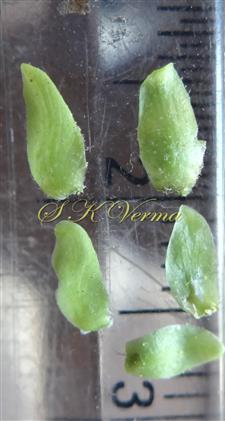
 and Disc glands in male floral bud-DSC07635.jpg)
-DSC07628 (2).jpg)
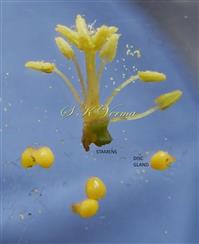

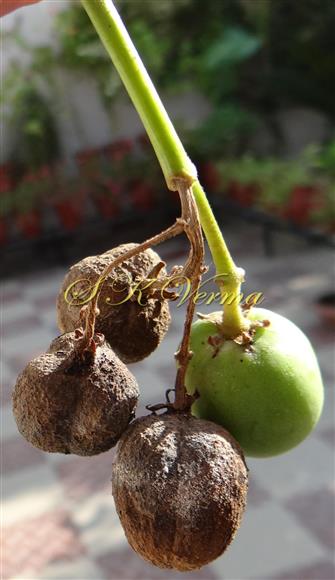
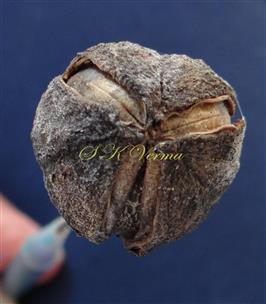
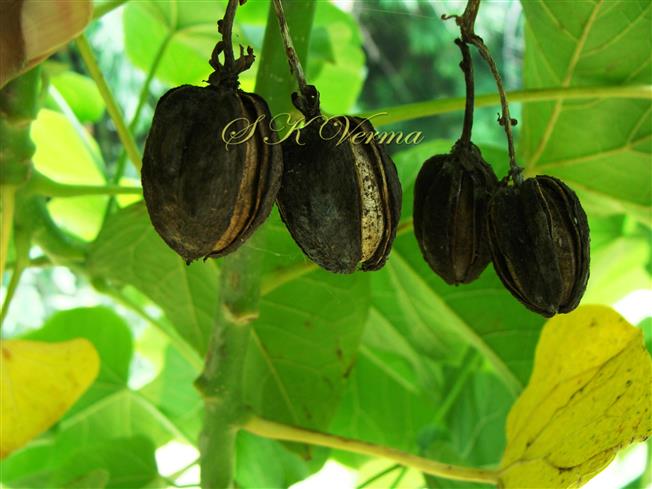



-6169.jpg)
-DSC07638.jpg)




 and Disc glands in male floral bud-DSC07635.jpg)
-DSC07628 (2).jpg)




